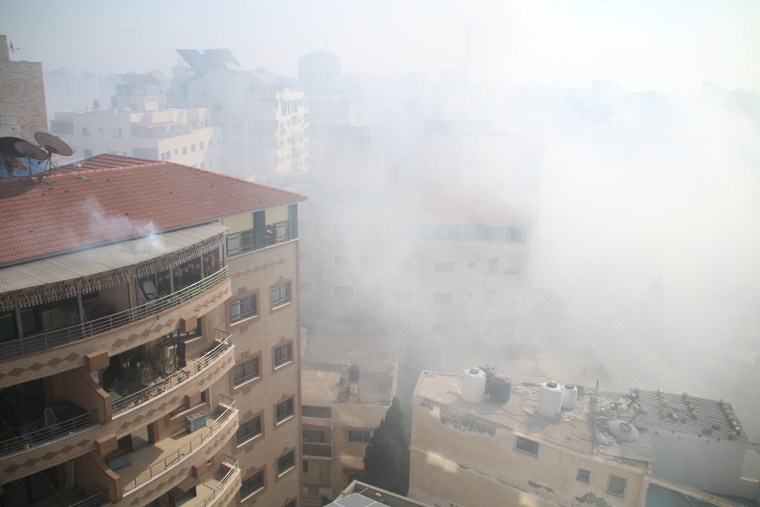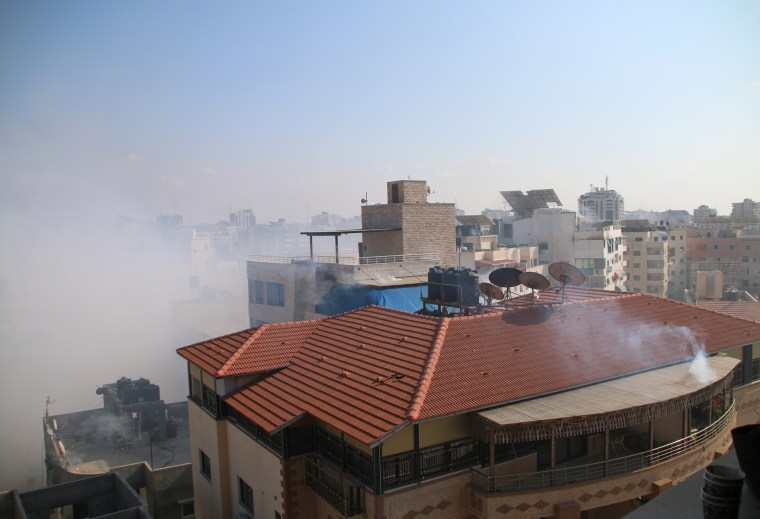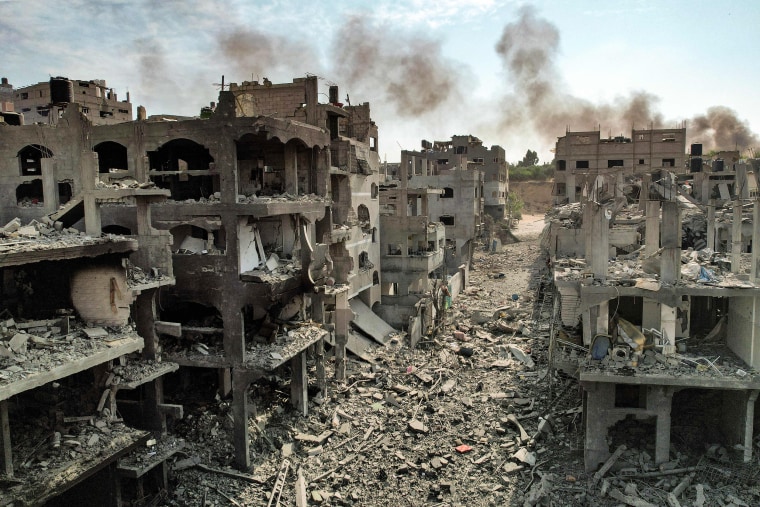A human rights watchdog group said Thursday that Israel’s military has used white phosphorus munitions in recent days in Gaza and Lebanon, weapons that can cause severe burns and are considered particularly dangerous for civilians due to their indiscriminate nature.
Human Rights Watch said that videos recorded in Lebanon and Gaza on Tuesday and Wednesday showed airdropped white phosphorus artillery rounds — an assessment that was vehemently denied by Israeli officials. Human Rights Watch said that its analysis was corroborated through two interviews with witnesses on the ground who described a distinctive garlic-like smell that is a signature of white phosphorus.
A spokesperson for the Israel Defense Forces (IDF) said:“The current accusation made against the IDF regarding the use of white phosphorus in Gaza is unequivocally false. The IDF has not deployed the use of such munitions.” A spokesperson for Prime Minister Benjamin Netanyahu did not respond to a request for comment.
NBC News, which did not have reporters present when the strikes occurred in Gaza and Lebanon, has not been able to independently verify Human Rights Watch's claims.
NBC News confirmed that a video published on October 11 by WAFA News Agency which appeared to depict one of the same airstrikes that was described by Human Rights Watch was filmed at Gaza City port.
White phosphorus munitions can potentially “cause burns and irritation, liver, kidney, heart, lung, or bone damage, and death,” according to the Centers for Disease Control and Prevention. International law allows for certain uses of white phosphorus, such as creating smoke screens or generating light, but human rights groups say that the deployment of white phosphorus in areas where it could harm civilians or via airdrop is prohibited by international human rights laws. NBC News has not confirmed if any civilians were in the areas where white phosphorus was allegedly used. Gaza is one of the most densely populated regions in the world.
Israel has not signed and is not bound by the United Nations convention on the use of white phosphorus. Human Rights Watch says that it previously documented the use of white phosphorus by Israel in military conflict in 2009, a claim that was also echoed by the International Red Cross. Israel said in 2013 it would no longer use white phosphorus except in limited circumstances, according to Human Rights Watch.
The munitions used this week in Gaza and Lebanon, the group said, were airburst 155 mm artillery projectiles, which can shower large areas with white phosphorus.
“The use of white phosphorus in densely populated areas of Gaza violates the requirement under international humanitarian law to take all feasible precautions to avoid civilian injury and loss of life,” Human Rights Watch said in its report.
In an email, Brian Castner, the weapons investigator for Amnesty International’s crisis team, agreed with Human Rights Watch’s assessment that the strikes they cited involved the apparent uses of white phosphorus. Castner added that Amnesty International has been conducting its own investigation into Israel’s alleged use of white phosphorus, saying, “We have verified that Israeli artillery forces striking Gaza are equipped with M825 and M825A1 155mm white phosphorus projectiles.”
The Office of the United Nations High Commissioner for Human Rights told NBC News it was looking into the claims.
In a Zoom interview, Palestinian surgeon Sara Al Saqqa, who works at Al-Shifa Hospital in Gaza City, said she had seen injuries this week that appeared consistent with white phosphorus wounds. “There’s certain types of weapons, the white phosphorus war crime injuries that’s not even humanitarian to be used in wars. It’s not allowed for anyone to use it. I’ve been seeing patients being injured with these type of injuries,” Al Saqqa told NBC News. “Those small shrapnels that just burn every single millimeter of their bodies, and like just cutting all the pieces of the depth of the bodies to parts,” she added.
Amhad Hasaballah, a Getty photojournalist, told NBC News that he photographed a barrage of strikes that hit Gaza City on Oct. 11 that he believed to include white phosphorus smoke. Hasaballah has been photographing the region since 2015 and has previously won awards for his coverage of Israeli airstrikes. The photographs are now published and labeled online as depicting white phosphorus.


The claim that white phosphorus was being used by Israel in this week’s conflict has been circulating for several days online. On Oct. 10, the official X account of the Palestinian Ministry of Foreign Affairs and Expatriates wrote, “Israeli warplanes and artillery use internationally #prohibited_white_phosphorus, destroying #Al_Karama neighborhood in the northwest of Gaza City with a continuous series of airstrikes.”
The report comes as Israel appears to be preparing a ground assault on Gaza, warning more than 1 million people to leave the north of the densely populated enclave, which is roughly the size of Washington, D.C. At least 1,300 people have been killed in Israel since Hamas staged a series of surprise attacks on Saturday, the country’s military has said. Nearly 1,800 people have been killed in Gaza, according to the Palestinian health ministry, as Israel continues to bombard the area.

